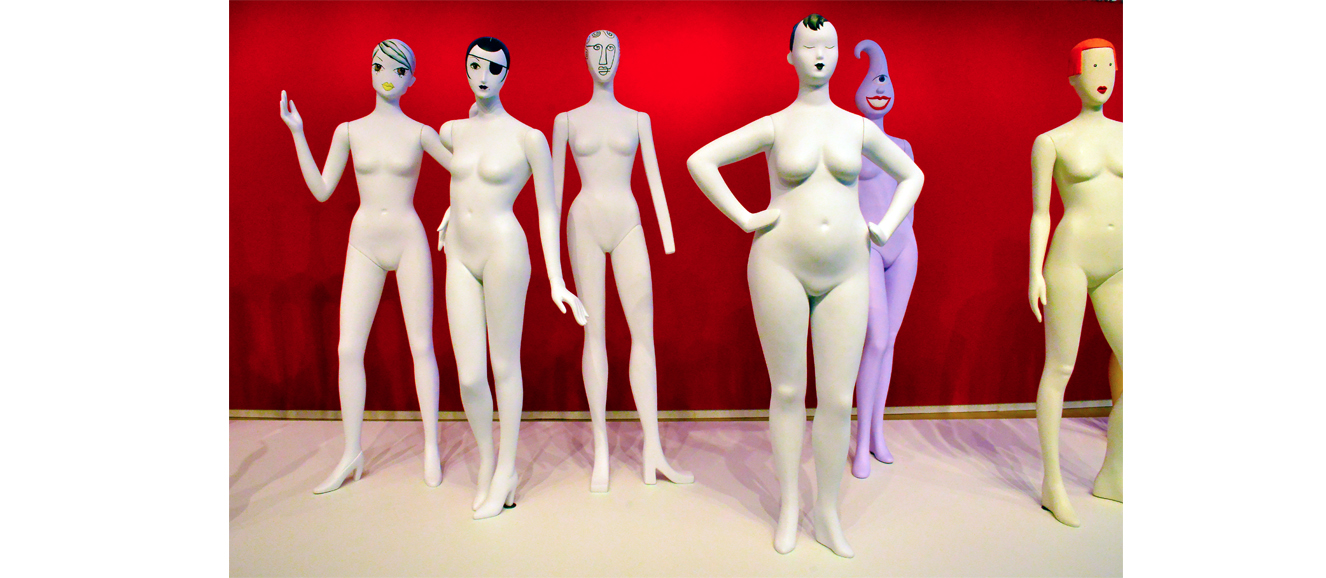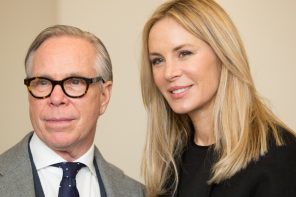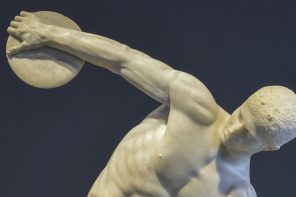When first lady Michelle Obama addressed the Democratic National Convention, she did so in a cobalt-blue, silk crepe, cap-sleeved A-line dress that underscored her statuesque beauty and the Dems’ blue-state appeal. But the real message may have been its designer – Christian Siriano, the “Project Runway” star known for his inclusivity.
“I just don’t think anyone should be excluded from having a beautiful dress,” he told The New York Times’ fashion director and chief fashion critic Vanessa Friedman when he stepped in to create a red-carpet look for Leslie Jones after the 40-something, 6-foot “Ghostbusters” star revealed she was not feeling the love from the fashion industry. Siriano’s response was a drop-dead red custom off-the-shoulder gown — with a slit up the left thigh — that echoed the fabulous number Julia Roberts wears to the opera in “Pretty Woman.” Jones looked stunning, and you chalked one more up for the democratizing of fashion and the acceptance — at long last — of the female body in all its infinite variety.
Or did you? The reality is that the message is often mixed. Yes, we have seen full-figured — or full-faced — stars like Adele, Lena Dunham, Queen Latifah, Melissa McCarthy and Amy Schumer on the red carpet, in makeup ads and on the covers of Vanity Fair and Vogue. We’ve seen Sports Illustrated’s first plus-size swimsuit cover, Ashley Graham. We’ve seen FabUplus magazine celebrate women’s “inner curves” as well as their outward voluptuousness.
And yet, body shaming of women like Graham — for being everything from fat to formerly fat to skinny — has become a spectator sport on the internet. Many retailers carry only up to a size 10, leaving the size 12s, 14s and 16s — the average American woman is a size 12 to 14 — in a no-woman’s land while their larger sisters head off to their area of the store. Meanwhile, strong women of color like Obama, Jones and Serena Williams are denigrated for not being feminine enough.
Indeed, so ingrained is the equation of thinness with traditional female beauty that a woman chillingly recounted in The New York Times the unwanted, envious admiration she received for unintentionally losing weight as she cared for her cancer-stricken child.
Even the euphemistic “plus size” — designed to acknowledge the Rubenesque among us — is not without controversy. A number of publications have begun to notice that makeup companies rarely feature plus women — CoverGirl cosmetics spokesmodel Queen Latifah being an exception — even when they’re only going to show the woman’s face. And recently, Schumer chided Glamour magazine for lumping her in with plus-size women.
“What I learned is people really don’t like being categorized by ‘plus-size,’” she told “The Tonight Show” host Jimmy Fallon. “We don’t need these labels.”
What Schumer also learned is that many on the web saw her plea for body transcendence as a hypocritical desire not to be counted among the plus-sized while doubting that the 5-foot, 7-inch, 160-pound star is a size 6 or 8. (For the record, I’m about the same size and wear a 12.)
Is it possible that two such women could wear such disparate sizes? You have to take into consideration the frame, shape and muscle-to-fat ratio of the body — as well as the sizing standards of the designer — in question.
“Oscar de la Renta is true to size,” says Anastasia Cucinella, manager and COO of Mary Jane Denzer in White Plains. “His size 6 is a size 6. Monique Lhuillier’s size 6 is more like a 4.”
The continuing ambivalence toward the female body — and the hefty role fashion plays in this — led student Emily Lennon of Cheshire, Conn., to create a series of eight Plexiglas etchings that consider the female form and beauty products. In “Through the Decades,” selected for the recent “iCreate” exhibit at the Bruce Museum in Greenwich, the hourglass shape of the 1890s Gibson Girl — with shout-outs to “Satin Skin Powder” and “Allan’s Anti Fat” — gives way to the boyish silhouette of the Roaring ’20s flapper, with her “Wash Away Fat” and “Chin Reducer and Beautifier” products.
“The figure and the clothes change,” says Lennon, a Cheshire High School senior who studies graphic design and animation at the Aces Educational Center for the Arts in New Haven, a magnet school. “But the focus on looking younger and more beautiful for the men stays the same.”
It might not always have been thus. Throughout most of art history, it was the active male body and not the relatively passive female body that was considered the ideal, says Kathleen Reckling, gallery curator at ArtsWestchester in White Plains and organizer of its provocative recent exhibit, “SHE: Deconstructing Female Identity.” It was only in the middle of the 19th century with the rise of the middle class that women came to the fore as the primary sex symbol, and they’ve been trading their beauty for status and power ever since.
What to do? Women are unlikely to relinquish their beauty crown to men, nor are the multibillion-dollar beauty and fashion industries likely to let them. But we can all undergo an attitude makeover, understanding that beauty, thinness, youth, health and sex appeal are not synonyms; that you need to find “the right outfit for the right body,” as Cucinella says, regardless of size. And the right sport for that body. (Witness ESPN’s “Body” issue, with all its colors, ages and shapes.)
“In the end, it’s about self-fulfillment,” Reckling says.
Your face and form — like your work, home, hobbies, thoughts, voice and, especially, relationships with others — are all reflections of your unique integrity.
And that’s the size of it.





